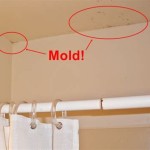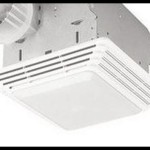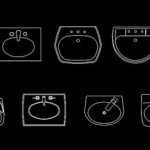Replacing Bathroom Floor Rotted In Kitchen Cabinets: How To
Discovering rot in your kitchen cabinets, particularly near the bathroom, signifies a serious moisture problem requiring immediate attention. Ignoring the issue can lead to structural damage, mold growth, and costly repairs down the line. This article provides a comprehensive guide to addressing this problem, from diagnosing the extent of the damage to implementing effective repair solutions.
1. Identifying the Source of the Leak
Before attempting repairs, it's crucial to pinpoint the leak's origin. Common culprits include faulty plumbing, leaky pipes under the sink, a damaged toilet seal, or even excessive humidity from the bathroom. A thorough inspection of all plumbing fixtures, pipes, and the bathroom floor is essential. A plumber may be required to diagnose more complex issues, especially if the leak is hidden within walls or under the floor.
2. Assessing the Extent of the Damage
Once the leak is identified and stopped, assess the damage to both the kitchen cabinets and subfloor. Carefully remove the affected cabinet sections, including the toe kick, to expose the subfloor underneath. Examine the subfloor for soft spots, discoloration, and signs of mold. Probing the wood with a screwdriver can determine the extent of the rot. Document the affected areas with photographs for insurance purposes and to guide the repair process.
3. Removing the Damaged Materials
Wear appropriate safety gear, including gloves, a dust mask, and eye protection, before beginning demolition. Using a reciprocating saw or other suitable tool, cut out the damaged sections of the subfloor, extending the cuts to reach solid, dry wood. Remove any affected insulation beneath the subfloor as well. Similarly, remove any rotted sections of the kitchen cabinets, including the toe kick and any adjacent cabinet components that show signs of moisture damage. Dispose of all removed materials properly according to local regulations.
4. Preparing for Repair
After removing the damaged materials, allow the area to dry completely. This may require several days, especially if significant moisture is present. Use fans or dehumidifiers to expedite the drying process. Once dry, treat the exposed wood with a wood hardener or preservative to strengthen the remaining structure and prevent future rot. This is crucial for ensuring the longevity of the repair.
5. Repairing the Subfloor
Measure and cut a piece of plywood or OSB board to match the size and shape of the removed section of the subfloor. Ensure the new piece fits snugly within the existing framing. Use construction adhesive and screws to secure the new subfloor to the existing joists or framing members. Ensure the surface is level with the surrounding subfloor.
6. Repairing or Replacing Cabinet Components
If the damaged cabinet sections are beyond repair, ordering replacement parts from the manufacturer is often the best approach. However, if the damage is minimal, repairing the cabinets may be feasible. Fill small rotted areas with wood filler and sand smooth once dry. Damaged toe kicks should be replaced entirely. Prime and paint all repaired or replaced cabinet components to match the existing cabinetry.
7. Installing New Flooring (Optional)
If the existing flooring was damaged by the leak, this presents an opportunity to replace it. This might involve removing and replacing sections of tile, vinyl, or other flooring materials. Ensure the new flooring is installed correctly and sealed appropriately to prevent future moisture intrusion. Consider using a waterproof membrane under the new flooring as an added layer of protection.
8. Preventing Future Issues
Taking preventative measures is crucial to avoid future instances of rot. Regularly inspect plumbing fixtures and pipes for leaks, address any issues promptly, and monitor humidity levels in the bathroom. Ensure proper ventilation in both the bathroom and kitchen by using exhaust fans and keeping windows open when possible. Consider sealing the exposed edges of the subfloor with a waterproof sealant as an additional preventative measure.
Repairing rotted sections of kitchen cabinets caused by bathroom leaks is a multifaceted process requiring careful attention to detail. By following these steps and addressing the root cause of the moisture problem, you can effectively restore your kitchen cabinets and prevent future damage. Remember that complex plumbing issues may require the expertise of a licensed plumber.

How To Replace A Rotten Kitchen Cabinet Floor 8 Simple Steps

How To Repair Your Water Damaged Floor Cabana State Of Mind

How To Replace A Rotten Kitchen Cabinet Floor 8 Simple Steps

How To Fix Rotted Cabinet Bottom Floor Much Sink Install House Remodeling Decorating Construction Energy Use Kitchen Bathroom Bedroom Building Rooms City Data Forum

How To Replace Rotted Wood Under A Kitchen Sink Diy Guide Dengarden

How Do I Repair My Water Damaged Sink Cabinet Hometalk

Replace Sink Cabinet Floor

Repairing A Water Damaged Sink Base Cabinet Floor
When Repairing The Bottom Of Cabinet Below Kitchen Sink Do I Need To Take Damaged Section Out Or Can Simply Put Plywood On Top It Quora

Discover Everything You Need To Know About Cabinet Repair
Related Posts







